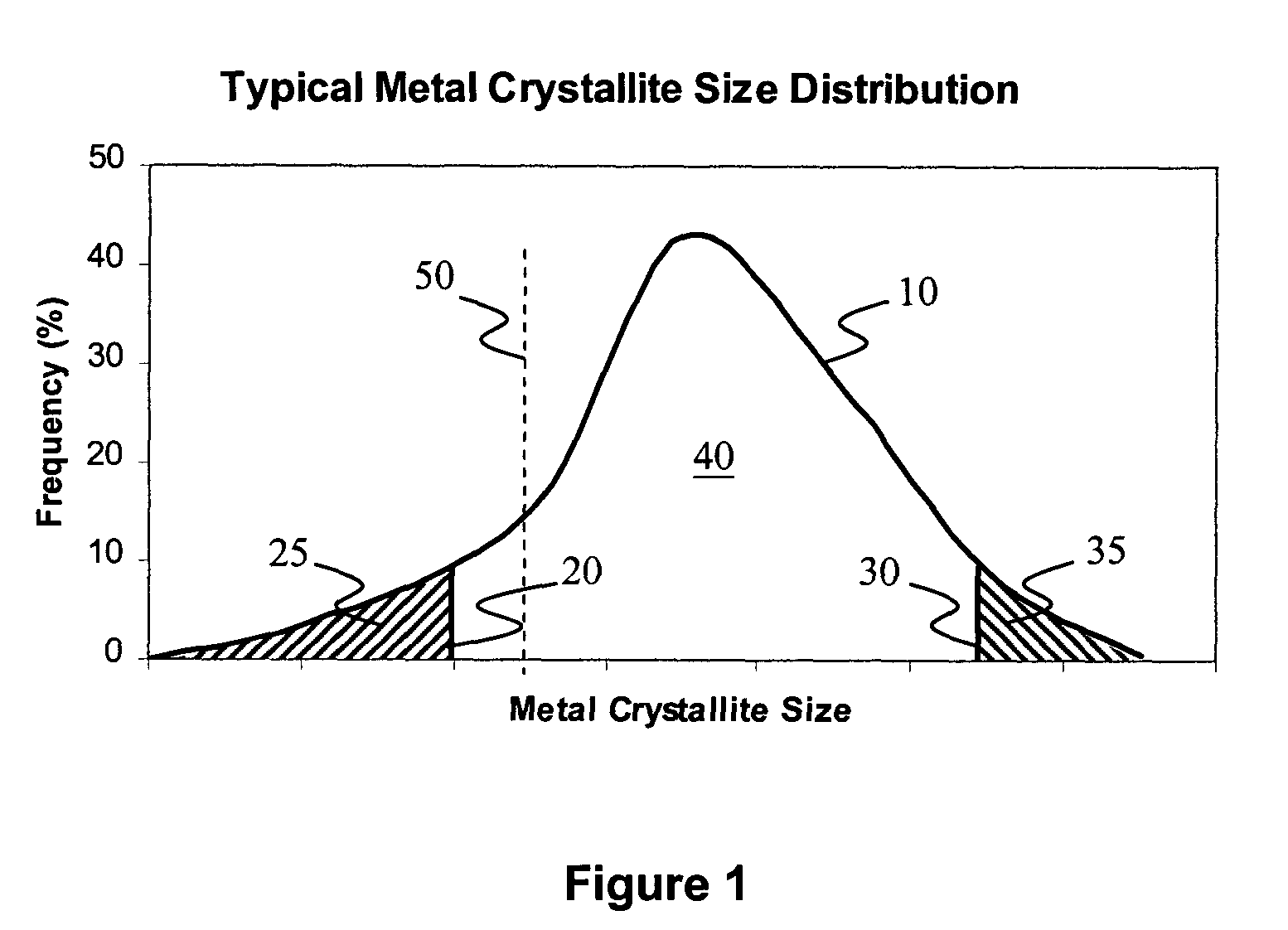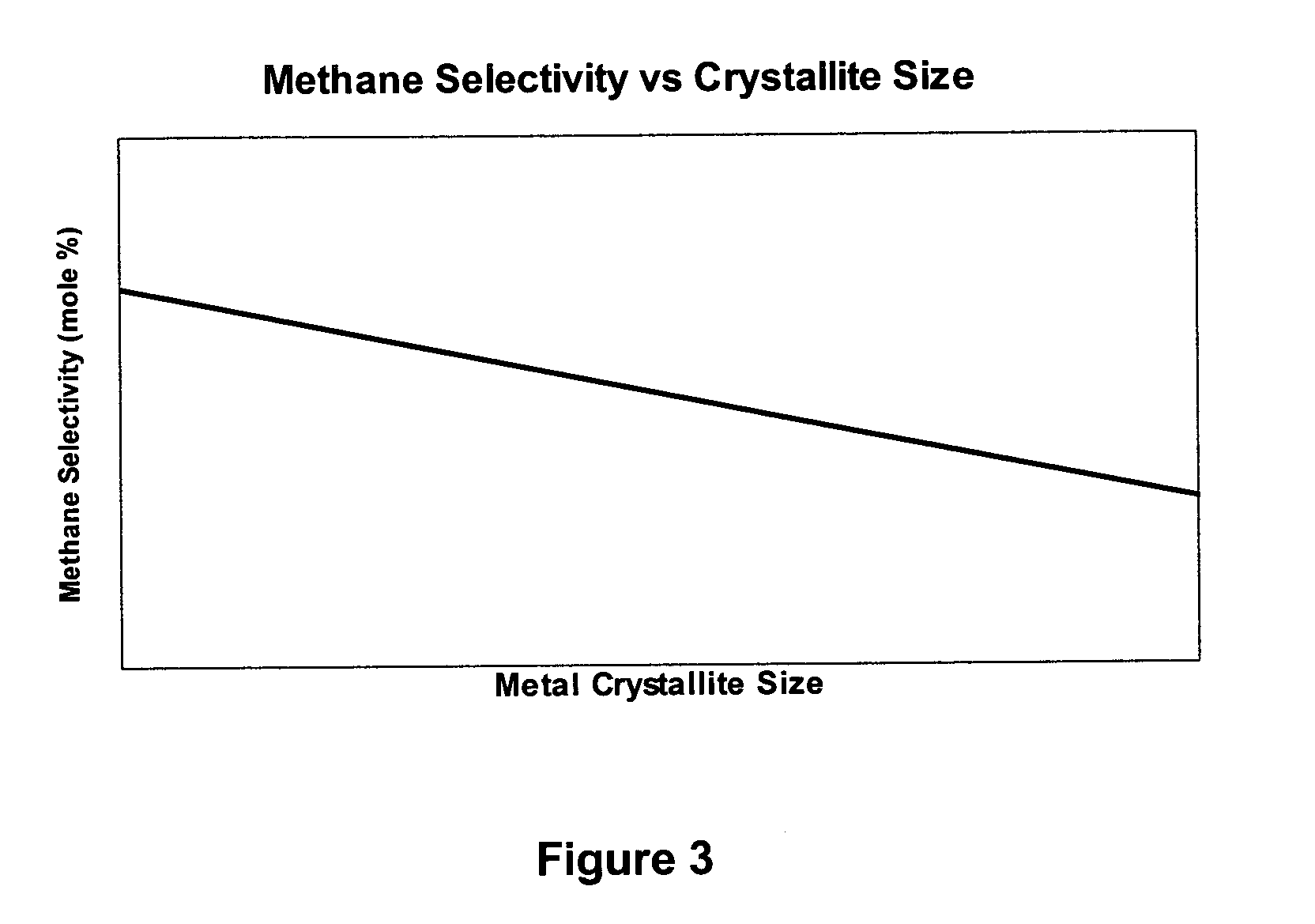Method for improved Fischer-Tropsch catalyst stability and higher stable syngas conversion
a technology of fischertropsch catalyst and stable syngas, which is applied in the direction of physical/chemical process catalyst, organic compound/hydride/coordination complex catalyst, and separation process, etc., can solve the problems of greater detriment to the stability of the catalyst, achieve less deactivation, improve the stability of the synthesis catalyst and its reaction, and achieve high activity level
- Summary
- Abstract
- Description
- Claims
- Application Information
AI Technical Summary
Benefits of technology
Problems solved by technology
Method used
Image
Examples
examples
Catalyst Preparation:
[0045]An alumina support was impregnated with a solution containing a cobalt salt (nitrate) and catalytic promoters precursors via multiple incipient wetness impregnation steps. The impregnated support was dried at a drying temperature of about 80° C. to generate dried solids. The solids were then heated at 0.5° C. per minute to a calcination temperature, about 350° C., and maintaining the solids at this temperature for about 30 minutes. The solids were then reduced in hydrogen flow at 0.5° C. per minute to 400° C. for 16 hours in a fluidized bed at near atmospheric pressure. The material was cooled, flushed with nitrogen and then sealed for transport into an inert atmosphere glove box. Before transfer to the reactor, 2 grams of the catalyst were mixed with about 180 grams of degassed solvent inside the glove box. The solvent used for the tests was a base oil used for lubricants manufacture and was substantially free of sulfur and nitrogen compounds. The solvent...
PUM
| Property | Measurement | Unit |
|---|---|---|
| size | aaaaa | aaaaa |
| molar ratio | aaaaa | aaaaa |
| molar ratio | aaaaa | aaaaa |
Abstract
Description
Claims
Application Information
 Login to View More
Login to View More - R&D
- Intellectual Property
- Life Sciences
- Materials
- Tech Scout
- Unparalleled Data Quality
- Higher Quality Content
- 60% Fewer Hallucinations
Browse by: Latest US Patents, China's latest patents, Technical Efficacy Thesaurus, Application Domain, Technology Topic, Popular Technical Reports.
© 2025 PatSnap. All rights reserved.Legal|Privacy policy|Modern Slavery Act Transparency Statement|Sitemap|About US| Contact US: help@patsnap.com



